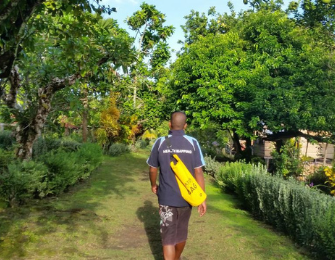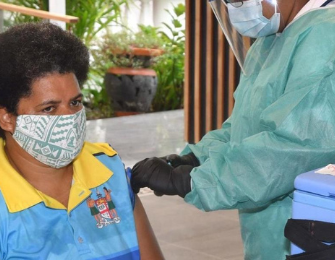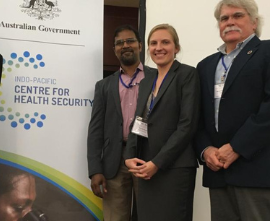The Health Security Initiative for the Indo-Pacific is supporting a whole-of-system approach to ensure new products get to those who need them.
A mid-term review of the Centre's support for Product Development Partnerships (PDPs) was recently completed. The review found continued evidence that the PDP model represents value for money.

Between 1995 and 2005 only 13 new drugs were developed to respond to neglected tropical diseases (NTDs), with communicable diseases disproportionately affecting populations living in poverty.
By 2017, there were 109 active research and development projects for NTDs. PDPs are responsible for almost a fifth of the total funded research and development for these diseases.
PDPs are non-profit entities that bring together the public and private sectors to research, develop and support access to new products that target diseases disproportionately affecting those in resource-poor settings.
While PDPs have increased development of new drugs, diagnostic tests, vector control tools and vaccines, there are a number of steps needed to get these products to those who need them and barriers that need to be overcome. This is called this the ‘product development to uptake pathway’ (Figure 1).
Recognising that new products were faltering along this pathway and not reaching the market, the Health Security Initiative (HSI) has funded a series of initiatives from product development right through to product access that are addressing these barriers.
At the product development stage, the HSI’s PDP Fund is supporting the following four PDPs over five years: Medicines for Malaria Venture (MMV), TB Alliance, Foundation for Innovative New Diagnostics (FIND) and the Innovative Vector Control Consortium (IVCC). It is also funding the Coalition for Epidemic Preparedness Innovations (CEPI) to support its core work in vaccine development for emerging infectious diseases for three years to December 2022.
In order to ensure the safety, quality and efficacy of new products before they are approved for use, HSI established the Regulatory Strengthening Program (RSP) in partnership with the Therapeutic Goods Administration (TGA). The RSP works with national regulatory authorities to strengthen the regulatory processes for medicines and medical devices in Laos, Cambodia, Indonesia, Myanmar, PNG and Vietnam, including strengthening the registration of new medical products including those developed by PDPs.
At the same time, the HSI funds the Asia Pacific Leaders Malaria Alliance (APLMA) which is working with partner governments at a policy level for country-level roll-out of new products and facilitates connections between PDPs, regulatory agencies and national malaria control programs.
As part of gaining WHO approvals for products to be included in their guidance and recommended product lists, products are tested in different contexts. The HSI funds operational research projects in countries across the Indo-Pacific which are improving country research capacity, and in some cases informing product effectiveness in country specific contexts. For example, IVCC’s NATNAT project will test vector control tools in PNG.
DFAT is also funding Gavi, the Vaccine Alliance, and the Global Fund. Both are mechanisms that pool donor funding to combat diseases, including the global procurement of products for use by country disease control and prevention programs.
Before products make it to the market, health workers need to be trained in how to use them and communities need to be aware of and understand the products in order to create demand. While the HSI is not directly supporting these activities for new products, it is equipping health workers with knowledge and skills in areas such as surveillance and infection prevention control and communities in detecting and responding to emerging infectious disease outbreaks – capacities which could also support the roll-out of new products.
The HSI supports the Tupaia program which has established a system – mSupply - to manage stocks and monitor use of medical products. mSupply is being rolled out in several countries in the Pacific and will help improve efficient product distribution and availability.
There is active collaboration and communication between these HSI-funded initiatives which has resulted in demonstrable added value. For example, the MMV-developed antimalarial tafenoquine was approved by the Thai Food and Drug Administration in 72% of the usual priority product time frame and the product was registered 2 months earlier than usual practice due to the RSP (TGA) setting up a system to share its drug assessment reports with the Thai FDA. APLMA helped to facilitate the process.
While the HSI is working across the product development to uptake pathway, there are many remaining barriers to access that require global and regional cooperation. Efforts to overcome these barriers have largely been fragmented. The HSI is engaging in global, regional and bilateral mechanisms to help to address these barriers.


